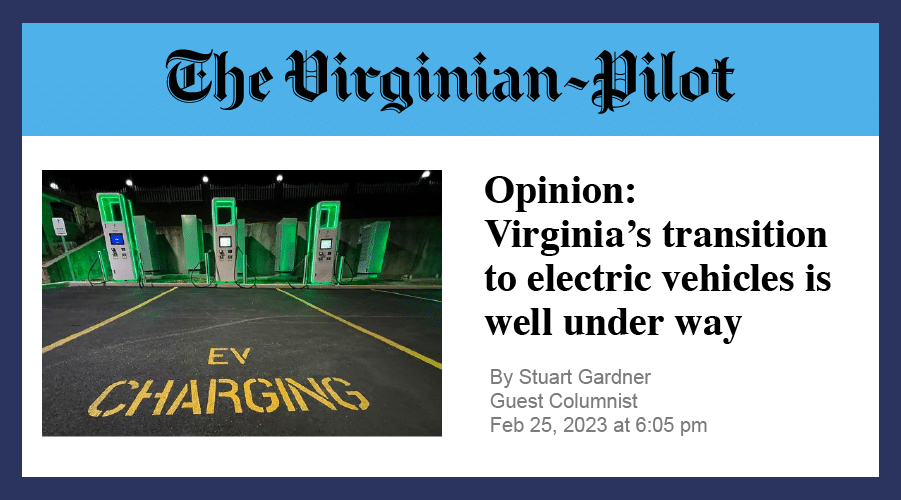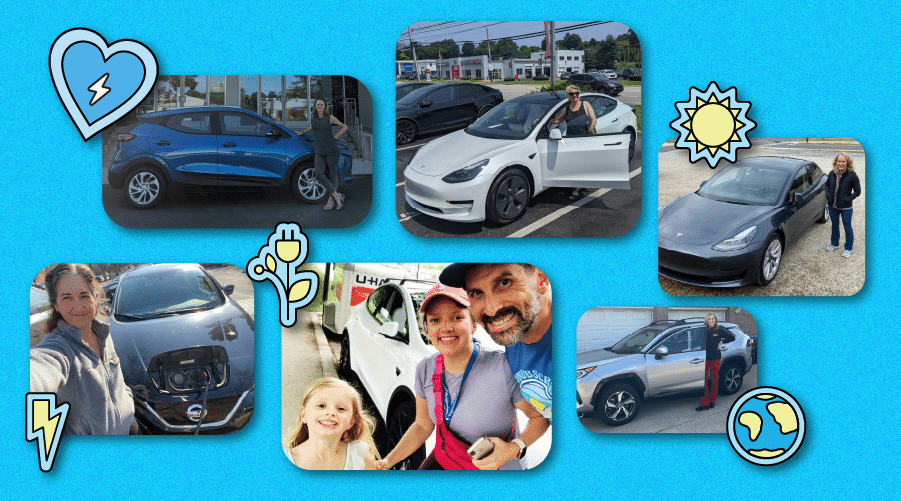We talk a lot about electric vehicles at Generation180. While the average daily commute is less than fifty miles, transportation remains the number one source of carbon emissions in the country. To make a dent in this problem, we need to switch to electric vehicles. Thankfully, the federal government and all 50 states are working to provide a seamless and predictable charging experience—ensuring that the well-traveled road to electric vehicles remains quintessentially American.
In this op-ed, I share how the new National Electric Vehicle Infrastructure (NEVI) Program will help Americans charge up no matter where their summer road trip takes them. We don’t have to wait any longer to make our next cars, trucks, or SUVs electric.
—Stuart Gardner, Electrify Your Ride Program Director
Earlier this month, the Biden-Harris administration provided a progress report on America’s network of publicly available electric vehicle (EV) fast chargers. Unlike the nearly 150,000 gas stations across the country, electric vehicle chargers are less ubiquitous, thus triggering our country’s collective “range anxiety” as we transition to a future where cars are plugged in, not gassed up. As the country gears up to make charging spots as familiar as gas stations are today, states — such as Virginia — will play pivotal roles in building our electric future.
At the end of 2021, the bipartisan Infrastructure Investment and Jobs Act invested $5 billion toward the National Electric Vehicle Infrastructure (NEVI) Program, and $2.5 billion for a discretionary Charging and Fueling Infrastructure grant program available to all 50 states. Virginia is expected to receive approximately $106 million under the NEVI program and is on track to electrify 1,080 miles of roadways by 2024.
Situated at an important national transportation hub, Virginia is home to more than a half dozen major freeways. Under NEVI, Virginia has designated eight “Alternative Fuel Corridors” or AFCs, throughout the commonwealth to foster a convenient and reliable public charging network, which includes more than 985 miles of interstate.
Virginia is also the perfect entryway for the budding technology of electric vehicles and the national charging infrastructure connecting north to south and east to west. In Virginia, there are currently more than 1,200 public charging stations available to the 40,000 registered electric vehicles. While EV registrations in the U.S. have doubled over the past year to about 5% of all new cars, they still only make up 0.5% of all registrations in Virginia.
All of that is changing. Today, nearly every car manufacturer in the U.S. offers an EV model. Convenient and seamless charging for longer drives is essential to accelerating the transition to electric vehicles. Historic barriers to owning an EV, such as battery range and price, are becoming less of an issue as technology advances. While a recent survey by Consumer Reports, finds “charging logistics” to be the top barrier for Americans transitioning to electric, it won’t be for long.
Why does all this matter?
Because a shift away from gas-powered vehicles is critical to addressing the No. 1 source of carbon emissions in Virginia, transportation. Reducing climate-harming emissions isn’t the only reason to drive electric: Electric vehicles also save Americans money at the pump and cost less over time because they have fewer moving parts to maintain.

A recent survey found that 76% of Virginians support having a policy requiring auto manufacturers to provide a minimum number of new electric vehicles for sale in Virginia. Almost three-quarters (73%) of Virginians from that same survey also responded that reducing dependence on fossil fuels and transitioning to clean energy is important. Besides those very valid reasons to switch to EVs, for those Virginians with a passion for driving, nothing can compare to the near instant acceleration of an electric vehicle.
For electric vehicles to truly proliferate, charging infrastructure must serve the diverse American population, beyond those able to charge at home (about 80% of charging today). Whether you’re charging at home, at work, the grocery store or movie theater, leaving your car to recharge while you go about your day will soon become as routine as locking your car.
Our network of public chargers is growing. Virginians shouldn’t let charging anxiety keep them from taking steps to plug into the clean energy future, today.
This piece was originally published on February 25th in The Virginian-Pilot. Read the op-ed here.















